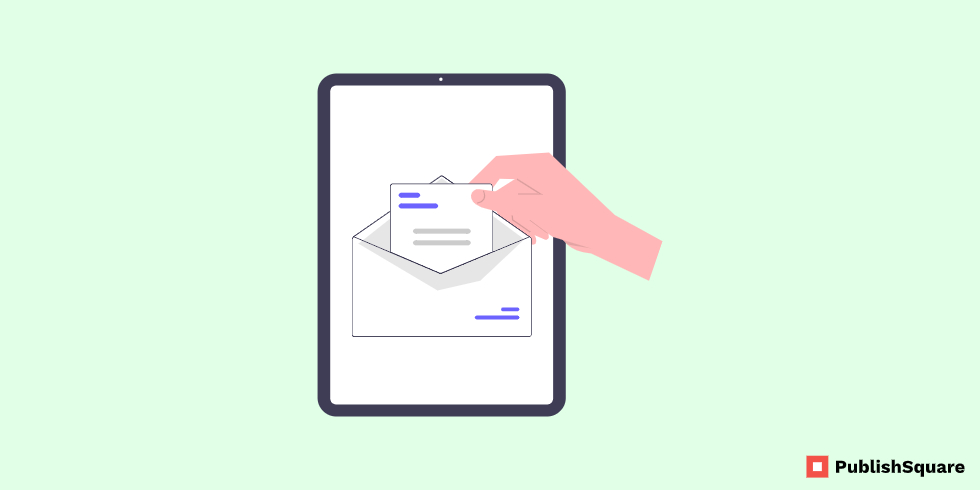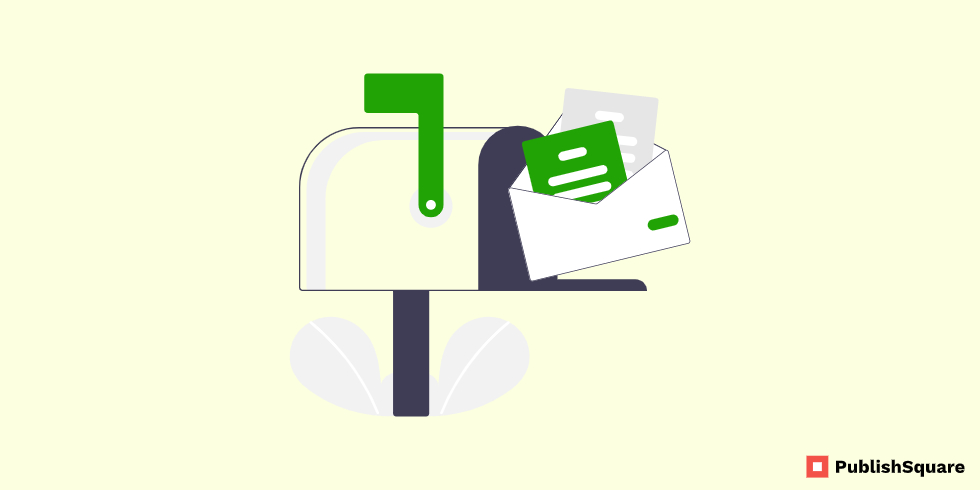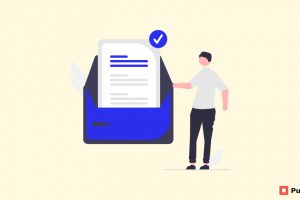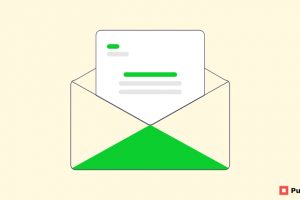Email frequency is the simplest form of email cadence that encompasses the timing and type of emails you send. In essence, if you send out different types of emails to your customers say a mix of promotional and informational your send frequency won’t be the same as a business that sends only one type of email.
We’ll answer all of these questions to describe email frequency best practices for email marketers in 2020 and give you tips to keep your campaigns as converting as they can be.
Table of Content
- The impact of email frequency
- Email frequency best practices
- Email frequency in numbers
- Define your ideal email frequency
- Be on time with emails
- Conclusion
The impact of email frequency
It is an impact of Email marketing that can allow you to create targeted and personalized messages. This can help you to build meaningful relationships with your customers. It can also improve response rates to your direct marketing campaigns. However, it is important not to overuse email marketing.
The open rate is the first thing affected by the email frequency. By the most popular belief the more often you send emails, the fewer value people see in them. Thus, the less they open them and the OR goes down. As a result, all the other rates reduce as well.
1. Open Rate
Open Rate is an email marketing metric that measures the percentage rate at which emails are opened. Though it is a general indicator of subject line effectiveness it can be a misleading metric for online marketers.
Important of Open Rate
Although not 100% accurate open rates provide a good measure of engagement over time. If the number of opens starts to dip, it’s a sign that you need to review your sending frequency or perhaps your content. Common factors in low or decreasing open rates are: Sending too many or too few campaigns.
The open rate is the first thing affected by the email frequency. By the most popular belief the more often you send emails the fewer value people see in them.
2. Click-through Rate
Definition: CTR is the number of clicks that your ad receives divided by the number of times your ad is shown: clicks ÷ impressions = CTR.
Click-through rate is the ratio of users who click on a specific link to the number of total users who view a page, email, or advertisement. It is commonly used to measure the success of an online advertising campaign for a particular website as well as the effectiveness of email campaigns. The average click-through rate is 10.67%, so a good CTR for businesses in this industry would be something like 11-12%. However, those are the two extremes. You can see that most industries have an average click-through rate of between 4-6%.
3. Unsubscribe Rate
An unsubscribe rate is a measure that indicates the percentage of users who have opted out of the mailing list after an email campaign. An unsubscribe rate is the number of unsubscribes divided by the number of emails delivered.
For example: If 3000 emails are delivered in your email campaign and 20 subscribers have opted out then your unsubscribe rate is 0.6%. A good unsubscribe rate is 0.5%.
Generally, an unsubscribe rate below 0.5% is a good unsubscribe rate for an email campaign. A rate below 0.2% typically indicates that you are within the norm and a rate above 0.5% means you have some work to do.
3. Conversion Rate
The average number of conversions per ad interaction is shown as a percentage. Conversion rates are calculated by simply taking the number of conversions and dividing that by the number of total ad interactions that can be tracked to a conversion during the same period.
Now we see about Conversion rates are calculated by simply taking the number of conversions and dividing that by the number of total ad interactions that can be tracked to a conversion during the same period.
For example: If you had 50 conversions from 1,000 interactions your conversion rate would be 5%, since 50 ÷ 1,000 = 5%.
Email Frequency Best Practices

You have probably understood by now that there’s no one-size-fits-all approach to email frequency. Even within eCommerce, the ideal email marketing frequency can differ highly between one brand and another and depends on a variety of factors such as the target audience, the type of products on offer, the time of the year, and the types of emails you’re sending. However, there are a few email frequency best practices that hold across all industries.
1. Let recipients know what to expect
Getting bombarded with dozens of emails a week is the first reason why people unsubscribe. This is why you should inform every new subscriber about the number of emails you are going to send. Better yet, allow them to opt-in for exactly the emails/frequency they want. Of course, some people would like to get promotional and/or educational emails daily. This will not only let you personalize the experience but also give you valuable insight into your audience.
2. Build relationships through consistent contact
Need to Start a small firm with a group of people you already know who are like your current customers. Ask them for feedback and alter your marketing strategies accordingly. Then reward them for their loyalty and communication. You should be surprised at what a big difference these little efforts can make in building relationships. This works for both B2B and B2C. This way they are constantly engaged and can be easily pushed closer to a purchase.
3. More is more for B2C email frequency:
For email, frequency is Less than 15% send emails over 5 times a month. Nothing unusual here and the customers’ reaction to the email campaigns was expected: The highest open and click-through rates are shown by the emails sent once a month (28% and 7% respectively).
B2C or business-to-consumer email marketing refers to sending email campaigns to individuals rather than business owners to promote your product or services. The B2C emails target consumer emotions to get their attention and encourage them to buy.
- The highest open and click-through rates are shown by the emails sent once a month (28% and 7% respectively)
- In the chart, the next are the emails sent 2-4 times a month: 21% open rate and 5% click-through rate
- The lowest open and click rates are within the campaigns sent approximately daily (20+ times per month): 12% open rate and 2% click-through rate
The analysis also the more emails are sent per month the higher the number of orders performed:
- A frequency of 10-19 emails per month (which had one of the lowest ORs and CTRs) resulted in most orders – 12.17 orders on average
- A frequency of 5-9 emails/month resulted in 7.44 orders monthly
- Using 2-4 emails a month resulted in 4.79 orders
- Only 1.64 purchases were made on average with a frequency of 1 email per month
4. Automate your campaigns for better control and workflow
Workflow automation is an approach to making the flow of tasks documents and information across work-related activities perform independently by defined business rules.
Email automation is a powerful marketing automation tool that lets you send the right message to the right people at the right time using automated workflows which is extremely effective for lead nurturing and ultimately driving sales from potential customers as well as existing ones.
Email Campaigns: With Primailer Email Marketing Software you can grow your email campaigns to any email address.
SMTP Configuration: Easily integrated SMTP configuration to control your SMTP ports for sending bulk emails.
Custom Messages: To forward numerous messages, send custom messages with greetings such as the name and surname with a single click.
Multimedia Formats: Send messages in any format including text, photos, and PDF files, or use HTML code to create a mass email template.
Primary Inbox Delivery: Send messages in any format and the recipient will receive them in their inbox.
5. Let your subscribers control the email frequency
Giving them the right of choice will bring down the unsubscribe level. Make sure the frequency is easy to choose and change. Adding an Update subscription preferences link at the end of your emails is a common practice.
This approach has at least four advantages:
- Whether subscribers mean to or not they still spend some time engaging with your brand
- It shows that you respect their preferences and care about their needs and desires
- Consequently, they become more loyal to your brand
- It makes segmenting your audience easier
6. Understand the difference between B2C and B2B email frequency
B2B stands for ‘business to business while B2C is ‘business to consumer’. B2B eCommerce utilizes online platforms to sell products or services to other businesses.B2C eCommerce targets personal consumers. A company that sells office furniture, software, or paper to other businesses would be an example of a B2B company.
B2B eCommerce tends to be more complex than B2C eCommerce.It involves heavier research more needs-based purchasing and less marketing-driven buying.
Many B2B buyers have very tight parameters around the purchases they can make. This means that traditional revenue drivers like add-ons don’t have the same impact.
7. Know your industry benchmarks to analyze frequency effectiveness
In its most basic form benchmarking compares your business to others in your industry giving you context to understand performance relative to the market. It’s the only way to get an accurate picture of your performance.
When you benchmark and analyze your data like a pro, you’ll be able to detect new market trends, pinpoint your biggest competitive threats, and gauge and grow your market share. That we swear you get continuous improvement and growth.
8. Segment your audience
You will need to create lists based on how many emails it’s been since each person last engaged. Break your audience into four segments: people who’ve opened an email in the last month and a half, 3 months, 6 months, and a year. Set up a workflow, list builder, etc. to automate this process. Segmentation is the division of email subscribers into smaller segments based on set criteria.
Typically segmentation is used as a personalization tactic to deliver more relevant email marketing to subscribers based on their geographic location, interests, purchase history, and much more
Email frequency in numbers
Marketer email tracking study two of the three most popular answers for both B2B and B2C marketers have also been the same. Both B2B and B2C marketers answered 2-3 times a month (37% each) and 4-5 times a month (25% for B2B and 30% for B2C) as the maximum email frequency they use.
1. One-third of email marketers prefer to send weekly
Subscriber segmentation is the most effective email marketing campaign strategy.33% of marketers send weekly emails and 26% send emails multiple times per month.77% of marketers have seen an increase in email engagement over the last 12 months. Smartphone users prefer to receive brand communications via email.
2. Maximum B2B and B2C email frequencies have some commonalities
In B2B there are multiple decision-makers involved compared to B2C but both categories constitute real people as the target audience. Both marketing strategies require excellent customer service and enhanced customer experience.B2B sells to businesses that resell the products while B2C sells directly to the end consumer. Key messaging for B2B zeroes in on what your product can deliver to their business. The net you cast to reach B2C customers is much wider than B2B.
3. Almost half the subscribers mark emails as spam because they are too frequent
The mail will be moved from the inbox to the spam folder if you mark it as spam. Messages from the same sender might be sent to Spam in the future. They can easily send their shady message to so many email addresses in a single stroke. That is why spam continues to be a big problem in the modern digital economy.
4. Subscribers would like fewer emails and better content
The number one reason people decide to unsubscribe from an email newsletter. The root causes behind sending too many emails could include: Forgetting to communicate your email send frequency in your opt-in form. Others wise they love less email and finding out better content.
5. Customers would love to receive emails at least monthly
Some important content An respective marketing sherpa conduct, So how much is too much? Marketing Sherpa surveyed email frequency, polling 2,057 adults on how often they’d like to receive promotional emails from companies. The top choice (86%) was at least monthly, and 62% preferred to receive emails at least weekly.
6. Adjusting email frequency to the best sending time produces better results
Adjustment frequency is the rate at which the interest rate on an adjustable-rate mortgage (ARM) increases or decreases in tandem with changes to its underlying benchmark rate.
Define your ideal email frequency
Our data suggest every two weeks is the “sweet spot” for getting the most people to see your emails without burning out your subscriber list. Though of course, you should always test to see what works best for you.
Be on time with emails
Email frequency does not get much credit for campaign success or failure and it should. Sending too often or not often enough can destroy all your email marketing efforts no matter how good your content, offer, or service is. Trust in email frequency best practices and research to help you keep your campaign KPIs high:
- Send your B2B campaign emails at least once a month B2C businesses are recommended to hit their customers’ inboxes at least weekly
- Tuesday and Friday are the best days to send emails especially if your email lands at around 11 am
- Segmentation will help you send relevant content and offers with personalization helping establish long-lasting customer relationships
Conclusion
It’s all the basic content that you are necessary to follow and the sources are useful and satisfying and easy done your program like this one thing to your visitors if you try to start your work you can follow and do your work and program step by step and finally we finish the topic our side and you can do your work well can we see the next interesting topic thank you. Share your thoughts about this blog on the comments section and follow Publish Square for more blogs like this.









